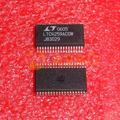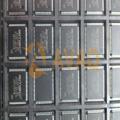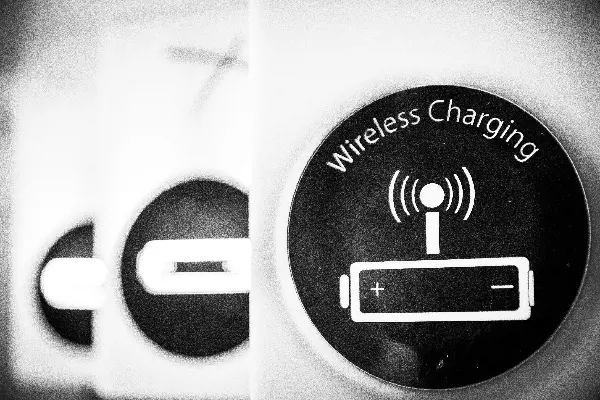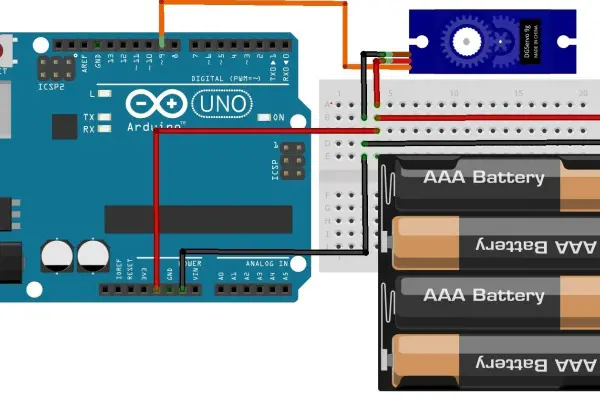Design of LCD TV Brightness Sensing Automatic Control
 Pubblicato: Apr 26, 2023
Automation & Control
Condividere:
Pubblicato: Apr 26, 2023
Automation & Control
Condividere:
With the rapid development of digital technology and the increasingly complete functions of LCD TVs, users can perform personalized settings such as channels, colors, brightness, contrast, and volume. Brightness is an indicator of the quality of color LCD TVs. In existing LCD TVs, users can adjust the brightness or dimming by adjusting the OSD menu items, but they cannot automatically adjust the brightness according to the brightness of the current surrounding environment. Therefore, how to avoid eye fatigue when watching LCD TVs, and how to enjoy programs at the most comfortable brightness at any time has become an important bottleneck affecting the further improvement of LCD TVs. During the day when the sunlight is strong or the display screen is reflective, if the brightness of the LCD backlight is not enough at this time, the program and operation cannot be clearly appreciated; at dusk or when the light source is dark, if the brightness of the LCD backlight is too strong, the user will Sensation of glare and eye fatigue. Therefore, in order to realize the brightness of LCD TV suitable for human eyes, the key is the automatic control of brightness sensing.

1 Brightness Sensor Automatic Control Function
Pulse Width Modulation (PWM) is a very effective technology that uses the digital output of a microprocessor to control analog circuits, and is widely used in many fields from measurement, communication to power control and conversion. PWM is a method of digitally encoding the level of an analog signal. Through the use of high-resolution counters, the duty cycle of the square wave is modulated to encode the level of a specific analog signal. The PWM signal is still digital because at any given moment, full-scale DC power is either completely on (ON) or not at all (OFF). A voltage or current source is applied to an analog load in a repetitive pulse sequence of ON or OFF. When it is on, it is when the DC power supply is added to the load, and when it is off, it is when the power supply is disconnected.
Brightness sensing automatic control is to collect the brightness of the surrounding environment through the brightness sensor, and the central processing unit of the LCD TV automatically sets and stably controls the PWM signal of the backlight of the LCD panel according to the brightness of the surrounding environment, and adjusts the backlight of the LCD panel by the PWM signal. Get the most comfortable screen brightness for the adaptive environment. When the sunlight is strong during the day or when the display screen has reflections, the brightness of the LCD backlight is not enough at this time, and the LCD TV automatically increases the brightness so that users can clearly enjoy the program and operation; at dusk or when the light source is dark, the LCD TV automatically adjusts the brightness. If the brightness is lowered, then the brightness of the LCD backlight panel is reduced, and the user will not feel glare, and the eyes will not be easily fatigued, and it will not easily cause eye strain, blurred vision or vision loss and other symptoms.
2 Problems Existing in Brightness Sensing Automatic Control
The existing automatic brightness control method of LCD TV is not ideal. When the brightness of the surrounding environment suddenly becomes brighter, the LCD TV automatically starts to adjust the brightness; when the brightness of the surrounding environment suddenly becomes dark, the LCD TV automatically starts to dim the brightness. Since the brightness of the surrounding environment changes from bright to dark, and the change time from dark to bright is very short, the LCD TV also automatically adjusts from dark to bright, and from bright to dark, so the flickering changes seen on the LCD screen , which greatly affects the user's enjoyment of programs and increases eye fatigue. Therefore, in order to solve the problem that the brightness can be automatically controlled without causing the screen to flicker, so that users can enjoy programs at the most comfortable brightness at any time, it has become an important bottleneck affecting the further improvement of LCD TVs. The problems of brightness sensing automatic control are mainly manifested in the following aspects:
2.1 Brightness sensing automatically controls environmental instability factors
(1) Changes in light. The brightness sensor of LCD TV is very sensitive to changes in the brightness of the surrounding environment, but the brightness of the surrounding environment is affected by many factors. The switch of ambient lights, such as indoor decorative lights and fluorescent lamps, will cause changes in brightness; natural sunlight shines in , the brightness becomes brighter, when the sunlight is blocked by dark clouds, the brightness becomes darker;
(2) Moving objects. The movement of objects in the surrounding environment, including the movement of people, produces shadows and causes changes in brightness, which in turn affects the automatic brightness control of LCD TVs.
2.2 Limitations of LCD TV structure
The light-sensing effect of the sensor used for brightness sensing and automatic control is also affected by the position where the sensor is installed on the LCD TV, the aperture of the plastic case where the sensor is installed, and the angle at which the sensor is installed.
(1) Sensor installation location. Generally, the sensor receiver is installed on the front shell of the LCD TV. If it is installed in the center of the shell, the effect of receiving light will be better, but it will affect the appearance of the whole machine. In order not to affect the overall appearance, the general sensor receiver is installed at the lower right foot of the front case, next to the LED indicator light.
(2) Sensor opening aperture. The sensor receiver is installed on the front shell of the LCD TV. The aperture size of the opening will also affect the light reception. If the aperture is large enough, the effect of receiving light will be improved, but it will affect the appearance of the whole machine, so generally The aperture of the shell is at least as large as the aperture of the sensor receiver.
(3) The effective receiving angle of the sensor. The front frame of some LCD TVs has some oblique angles due to the requirements of the shape. If the sensor receiver is installed on the oblique side, it will affect the light sensing reception of the sensor.
2.3 The software system is imperfect
The rationality of the design logic architecture of the software system and the way the software detects the sensor are the main factors affecting the automatic control of the brightness sensor. The main factors are the detection time and times. If the detection time and times are too short, the sensor receiver is not stable enough, causing the brightness sensor automatic control to start too frequently; if the detection time and times are too long, the sensor is connected
The receiver may receive outdated data, which cannot provide real-time feedback on changes in the brightness of the surrounding environment, resulting in a slow response to the activation of the brightness sensing automatic control. Usually on the OSD menu, design a brightness sensing automatic control enable/disable selectable switch. If the switch is selected to be off, automatic brightness sensing control will be disabled, that is, the brightness of the screen will not change due to changes in ambient brightness. In addition, the failure of the LCD TV itself and the damage of components will also affect the brightness sensing automatic control of the software.

3 Hardware Circuit Design
The base block of brightness sensing and automatic control is composed of light sensor, A/D conversion, CPU, graphics processor, brightness control module, liquid crystal panel, etc. According to the brightness of the surrounding environment, the light sensor outputs a certain value of DC level, and the DC level signal is converted into a digital signal by A/D and sent to the CPU. On the one hand, the CPU outputs a PWM square wave signal with a specific period and duty cycle according to the setting of the program. After filtering and shaping, it becomes a certain DC level, which is used as the brightness control signal of the brightness control module, and then the brightness control module Change the current of the lamp tube of the LCD panel, thereby changing the brightness of the LCD panel; on the other hand, the CPU adjusts the brightness register value of the graphics processor according to the setting of the program, thereby changing the brightness of the data output to the LCD panel. The adaptive brightness data signal and the adaptive brightness control signal are output from the image processor to the brightness control module, so as to finally realize the induction automatic control of the LCD TV.
4 System software design
4.1 Brightness sensing automatic control software architecture
The software architecture of brightness sensing automatic control mainly includes brightness data acquisition, real-time monitoring technology, automatic correction algorithm and analog hysteresis comparison algorithm. The brightness data acquisition is to sense the brightness of the surrounding environment through the light sensor, convert the brightness signal into an analog electrical signal, and then convert it into a digital signal by the ADC, and then send the digital signal to the CPU of the LCD TV for processing. The digital signal collected through the brightness data is sent to the CPU for automatic correction algorithm processing; then the analog hysteresis comparison algorithm is used to obtain a stable PWM signal; the backlight of the LCD panel is controlled by the control backlight brightness module.
4.2 Automatic correction algorithm
The steps of the automatic correction algorithm of brightness sensing automatic control: first set the time interval for collecting brightness data and set the number of samples; when the time interval is timed, read the data of the brightness of the light sensor; when the number of samples reaches the preset number , to output stable brightness; then the CPU outputs stable PWM to control the backlight of the LCD panel. The set time interval 201 for collecting brightness data is the time for initializing each time to collect brightness of the light sensor. Time timing to 202 is the time to collect the brightness of the light sensor. The collected luminance data 203 is the numerical value of the digital signal that the CPU reads the luminance data of the light sensor and passes through the ADC. The arrival sampling times 204 is the number of times when the collected brightness data are all the same, which means that the ambient brightness has been stabilized and will not change any more. Stable brightness output 205 is that the CPU outputs stable PWM to control the backlight of the LCD panel.
4.3 Analog Hysteresis Comparison Algorithm
The analog hysteresis comparison algorithm is different from one threshold voltage of ordinary automatic sensing brightness control. Two threshold voltages are set, which are called positive threshold voltage and negative threshold voltage respectively. When the ambient brightness input signal rises from low level (dark) to high level (bright), the input voltage that changes the state of the PWM circuit is called the positive threshold voltage, and when the input signal drops from high level (bright) The input voltage that changes the state of the PWM circuit during the transition to the low level (dark) is called the negative threshold voltage.
The analog hysteresis comparison algorithm of brightness sensing automatic control divides the PWM backlight control into five sections, and four analog hysteresis comparison algorithms control. Each analog hysteretic comparator has two threshold ADC values, called positive-going threshold ADC and negative-going threshold ADC. The input ADC that changes the state of the PWM circuit when the ambient brightness input signal rises from low level (dark) to high level (bright) is called a positive threshold ADC. When the input signal falls from high level (bright) The input ADC that changes the state of the PWM circuit in the process of going to a low level (dark) is called a negative-going threshold ADC. For example, ADC2 is a positive threshold ADC, and ADC1 is a negative threshold ADC. When the ambient brightness input signal rises from ADCI low level (dark) to ADC2 high level (bright), the PWM state changes from PWN5 to PWM4; When the environment brightness input signal falls from ADC2 high level (bright) to ADC1 low level (dark), the PWM state changes from PWN4 to PWM5. This is designed to prevent slight changes in the ambient brightness input signal (below a certain threshold ADC) from causing changes in the output PWM, ensuring stable LCD panel backlight control.
This design realizes the automatic control of brightness sensing, which is divided into brightness data acquisition, automatic correction algorithm, analog hysteresis comparison algorithm, and control backlight brightness module. Through the multi-sampling automatic correction algorithm, a stable brightness control signal is obtained. A software simulation hysteresis comparison algorithm model is proposed to avoid the change of screen brightness from bright to dark due to small changes in ambient brightness, which provides an ideal solution for brightness sensing processing of LCD TVs.
Consiglia prodotti
Related Solutions
-
![NXP Introduces High-Power Wireless Charging Solution for Laptops and 2-In-1 Tablets]()
NXP Introduces High-Power Wireless Charg...
NXP Semiconductors announced the first high-power wireless charging solution for notebooks and 2-in-...
Apr 28, 2023 Elettronica di consumo -
![Multifunctional Street Light Automatic Control Circuit Solution]()
Multifunctional Street Light Automatic C...
The street light automatic controller is suitable for the automatic control of street lights in resi...
Apr 26, 2023 Elettronica di consumo -
![How Can IoT Solution Providers Build a Secure IoT System at Different levels?]()
How Can IoT Solution Providers Build a S...
The Internet of Things (IoT) has been attracting a lot of attention in the industry for its security...
Apr 25, 2023 Elettronica di consumo -
![ADI Proposes a Solution for Servo Motor Control]()
ADI Proposes a Solution for Servo Motor ...
For motor control solutions, ADI offers a comprehensive portfolio of products, including analog-to-d...
Apr 25, 2023 Elettronica di consumo -
![IoT Transforms and Adds Value to Consumer Electronics Industry]()
IoT Transforms and Adds Value to Consume...
The Internet of Things (IoT) is taking consumer electronics to another level and could lead to the n...
Apr 26, 2023 Elettronica di consumo -
![Texas Instruments Programmable Logic and Automation Controller (PLC/PAC) Solutions]()
Texas Instruments Programmable Logic and...
Programmable logic controllers (PLCs) and programmable automation controllers (PACs) process and con...
Apr 26, 2023 Elettronica di consumo


 Tempo di aggiornamento: Apr 26, 2023 Elettronica di consumo
Tempo di aggiornamento: Apr 26, 2023 Elettronica di consumo










